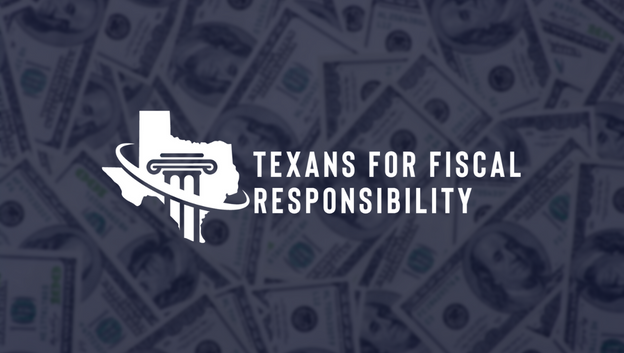
Executive Summary
A lot of people know about Texas’ $32.7 billion budget surplus. What most don’t know is that the Texas Legislature has $78.4 billion more in state funds to spend this year than it spent in 2021 and that the Texas Legislature is on track to spend most of the surplus funds this session on something other than property tax relief.
| New Property Tax Relief | New State Spending |
|---|---|
| $9.8 billion | $52.7 billion |
This session, the Texas Legislature has chosen to appropriate $52.7 billion for new spending, but only $9.8 billion has been appropriated for property tax relief (12.5% of the surplus). Texas politicians have said they can’t put more into property tax relief because of constitutional spending limits. But the truth is that they won’t put more into property tax relief because they want to spend money on other things. It is not too late, however, for Texas taxpayers. Until the final gavel of the Legislature’s regular session falls on May 29, Texans should let politicians in Austin know they want real property tax relief by eliminating school property taxes.
The Texas Legislature’s Spending Spree
Texas’ $32.7 billion surplus in the current two-year (biennial) budget cycle is just the tip of the iceberg when it comes to how much money is available to the Texas Legislature this session. According to the Texas comptroller and the Legislative Budget Board (LBB), the Legislature has $188.3 billion in General Revenue-Related (GRR) funds available for spending this session (GRR funds are state funds that are generally available for spending with few restrictions). This amount, which includes the $32.7 billion surplus and estimated funds available over the next two years, is more than a Legislature has ever had and more than the comptroller-certified $118 billion that the Legislature spent in the 2022-23 appropriations bill.
2023 Surplus Funds
| Available Funds* (2024-25) | $188,226,400,000 |
| Appropriations Base** (2022-23) | $109,809,000,000 |
| Surplus Funds 2023 | $78,417,000,000 |
* Texas comptroller – Biennial Revenue Estimate 2024-25, ** Texas comptroller – Certification Revenue Estimate 2022-23 Revised (p. 9)
What this means is that the “surplus” or excess funds available to the Texas Legislature this session is actually $78.4 billion, not the $32.7 billion that has been so widely publicized. Why the difference?
Given events in Austin over the last three and a half months, the difference is easy to explain. The Big Three legislative leaders (Gov. Greg Abbott, Lt. Gov. Dan Patrick, and House Speak Dade Phelan) and most of the other 149 members of the Texas Legislature are more interested in spending the $78.4 billion surplus to please their constituents in Austin than in giving it back to their constituents, i.e., voters and taxpayers in their districts. Keeping the “surplus” as small as they can gives them more leeway to spend taxpayer money.
And spending is what the Texas Legislature has been focused on this session. With most conservative priorities languishing and on the verge of dying in the Texas House or Texas Senate, the Legislature has not had a problem quickly moving spending bills through the process. For instance, when the primary appropriations bill, HB 1, was received by the Texas Senate on April 11, it was referred to the Senate Finance Committee within 30 minutes. Within a day, Senate Finance held a hearing and reported HB 1 to the full Senate. Then only five days later, on April 17, the entire Senate passed the $308 billion spending bill (state and federal funds) unanimously with almost no debate.
2023 Spending Increase – HB 1 & SB 30 (Senate)
| Total State Funds Appropriated – 2023* | $223,649,200,000 |
| Total State Funds Appropriated – 2021 | $161,159,700,000 |
| Increase | $62,489,500,000 |
* Includes $10 billion in HB 1 transferred, though not appropriated, contingent on passage of SB 6 and SJR 1
Where Did All the Taxpayer Money Go?
The chart above shows that the Texas Legislature, using the Senate’s versions of SB 30 (the supplemental appropriations bill for 2022-23) and HB 1 (the primary appropriations bill for 2024-25), has increased total session appropriations by $62.5 billion over 2021. Taking into account the $78.4 billion in excess funds the Legislature started with, that means that Texas legislators spent 80% of the surplus funds available to them. That leaves the question, where did all the taxpayer money go?
Most of it will not be going to taxpayers. While $9.8 billion is scheduled to returned to taxpayers through property tax relief, $52.7 billion will be spent on things like state agencies, big businesses, and education. In the chart below, we show the spending increases over what the Texas Legislature appropriated in 2021, when it adopted its last budget. Some of the increases are made in SB 30. Most of the increases are in HB 1. For the purposes of this chart, we use the Senate’s version of HB 1 (the House passed its version of HB 1 earlier in April). To determine the spending increases in HB 1, the spending amount in each category in HB 1 is compared to the amount appropriated in the same category by the Legislature in the Regular Session, Second Called Session, and Third Called Session in 2021. These amounts can be found in the LBB’s Summary of Appropriations for the 2022-2023 Biennium.
Where the Budget Surplus Was Spent (Senate Version of HB 1)
| Spending Type | Increased Spending |
|---|---|
| Construction of Generation Plants* (HB 1) | $10,000,000,000 |
| Property Tax Relief (HB 1) | $9,800,000,000 |
| Health and Human Services (HB 1) | $7,666,500,000 |
| Higher Education (HB 1) | $5,291,600,000 |
| Electric Grid Debt Relief (SB 30) | $3,900,000,000 |
| Medicaid (SB 30) | $2,900,000,000 |
| Hospital Construction (SB 30) | $2,300,000,000 |
| Public Safety/Criminal Justice (HB 1) | $2,191,600,000 |
| Natural Resource Agencies (HB 1) | $1,637,600,000 |
| State Employee Retirement (SB 30) | $1,000,000,000 |
| Teacher Retirement (SB 30) | $1,000,000,000 |
| Business/Economic Development (HB 1) | $893,600,000 |
| State Building Maintenance (SB 30) | $400,000,000 |
| New Historic Sites Fund (SB 30) | $300,000,000 |
| Texas Guaranteed Tuition Plan (SB 30) | $243,800,000 |
| Criminal Justice Staffing, etc. (SB 30) | $237,200,000 |
| Historic Site Maintenance (SB 30) | $217,100,000 |
| New Texas State Library (SB 30) | $210,000,000 |
| New State Preservation Fund (SB 30) | $200,000,000 |
| State Employee Retirement “Shortfall” (SB 30) | $165,600,000 |
| Regulatory Agencies (HB 1) | $116,200,000 |
| Park Acquisitions (SB 30) | $100,000,000 |
| Film Incentive Program (SB 30) | $100,000,000 |
| State Employee Salary (SB 30) | $99,200,000 |
| Texas Legislature Budget (HB 1) | $60,500,000 |
| Total | $51,030,500,000 |
* Transferred, not appropriated
While this paper is not examining the Texas House’s appropriations this session, it should be noted that the results would not be too different; notably different is $10 billion transferred for the Senate’s Energy Insurance Program. The House’s appropriation of GRR funds is approximately $4 billion less than the Senate’s. Both houses of the Texas Legislature have spent most of the surplus funds this session on things other than property tax relief; only 13% of the surplus this session is being spent on property tax relief.
| House Bill 1 (Senate) | Increased Spending |
|---|---|
| Payments to Energy Companies | $13.9 billion |
| Medicaid and Healthcare | $12.9 billion |
| New Property Tax Relief | $9.8 billion |
| Higher Education | $5.5 billion |
| Agencies, Employees, and Facilities | $4.7 billion |
| Regulation | $2.6 billion |
| Public Safety/Criminal Justice | $2.2 billion |
*$10 billion of this has been reserved in HB 1 but has not yet been appropriated
The chart above provides some insight into the priorities of the Texas Senate this session. One thing to note is that property tax relief is relatively low on the priority list of the Texas Senate and Texas Legislature. Increased spending on energy and healthcare markets, which are in the process of being taken over by the government, total $26.8 billion, far above the $9.8 billion provided by the Senate for property tax relief. While the spending in the energy and healthcare markets is often claimed to benefit individual Texans, the largest beneficiaries will mostly be energy and healthcare companies.
Conclusion
The same is true for virtually all the increased spending this session. While the size and scope of government rapidly increases, Texas taxpayers will receive relatively small property tax savings that will be gone within three years as schools and local governments continue their profligate spending and raise property taxes to wipe out any property tax “relief” offered by the Texas Legislature. Texans who want real property tax relief should let elected officials in Austin know they want real, long-lasting property tax relief through the elimination of school property taxes.




